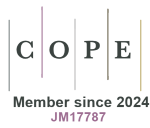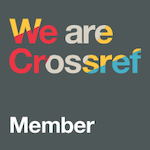Budget impact analysis of natalizumab biosimilar on pharmaceutical expenditure for the treatment of relapsing-remitting multiple sclerosis in Italy
DOI:
https://doi.org/10.33393/ao.2024.3078Keywords:
Analysis, Biosimilar, Budget impact cost, Italian NHS, Natalizumab, Relapsing-Remitting Multiple SclerosisAbstract
Background: The availability of high-efficacy disease-modifying therapy (DMT), including natalizumab, improved treatment efficacy in adults with highly-active relapsing-remitting multiple sclerosis (RRMS). Natalizumab patent protection has expired, and the natalizumab biosimilar (Tyruko®) has been recently reimbursed by AIFA. As the price of natalizumab biosimilar is expected to be lower as compared with natalizumab originator’s price, a budget impact analysis was conducted to assess the economic impact associated to the introduction of natalizumab biosimilar for patients with highly-active RRMS.
Methods: A budget impact model was developed, considering the INHS perspective and a 5-years time horizon. The number of patients treated with natalizumab was estimated based on historical natalizumab consumption data, disease prevalence rates and natalizumab market share. The budget impact population was divided into prevalent and incident patients. The model assumes that some patients in treatment with natalizumab originator will switch to natalizumab biosimilar and that some naïve patients will directly start treatment with natalizumab biosimilar. The ex-factory price of natalizumab originator (intravenous and subcutaneous) and biosimilar (intravenous) and the corresponding administration costs were included. All assumptions were validated by expert opinion.
Results: Eligible population was estimated at 7,552, 7,779, 8,090, 8,494 and 8,834 in years 1, 2, 3, 4 and 5 respectively. The introduction of natalizumab biosimilar, considering a progressive increase in market share from 9.6% (year 1) to 40.5% (year 5), would provide an overall savings (5-years time horizon) over € 47 million to the INHS. The scenario analysis highlights that the lower treatment cost of biosimilar natalizumab compared to originator natalizumab would offset the higher cost associated with intravenous versus subcutaneous administration.
Conclusion: Considering the results of this budget impact analysis, it is realistic to expect that the presence of biosimilar natalizumab will contribute to the sustainability of public pharmaceutical expenditure.
References
- Zanetta C, Rocca MA, Meani A, et al. Effectiveness and safety profile of cladribine in an Italian real-life cohort of relapsing-remitting multiple sclerosis patients: a monocentric longitudinal observational study. J Neurol. 2023;270(7):3553-3564. https://doi.org/10.1007/s00415-023-11700-7 PMID:37027018 DOI: https://doi.org/10.1007/s00415-023-11700-7
- Filippi M, Grimaldi L, Conte A, et al; EASIER Study Working Group. Intravenous or subcutaneous natalizumab in patients with relapsing-remitting multiple sclerosis: investigation on efficiency and savings-the EASIER study. J Neurol. 2024;271(1):340-354. https://doi.org/10.1007/s00415-023-11955-0 PMID:37715789 DOI: https://doi.org/10.1007/s00415-023-11955-0
- MS International Federation. Atlas of MS. https://www.atlasofms.org/chart/italy/epidemiology/number-of-people-with-ms (Accessed March 2024)
- Lublin FD, Reingold SC, Cohen JA, et al. Defining the clinical course of multiple sclerosis: the 2013 revisions. Neurology. 2014;83(3):278-286. https://doi.org/10.1212/WNL.0000000000000560 PMID:24871874 DOI: https://doi.org/10.1212/WNL.0000000000000560
- García Merino A, Ramón Ara Callizo J, Fernández Fernández O, Landete Pascual L, Moral Torres E, Rodríguez-Antigüedad Zarrantz A. Consensus statement on the treatment of multiple sclerosis by the Spanish Society of Neurology in 2016. Neurologia. 2017;32(2):113-119. https://doi.org/10.1016/j.nrleng.2016.02.003 PMID:27157522 DOI: https://doi.org/10.1016/j.nrleng.2016.02.003
- Arrambide G, Iacobaeus E, Amato MP, et al; 2018 ECTRIMS Focused Workshop Group. Aggressive multiple sclerosis (2): treatment. Mult Scler. 2020;26(9):1352458520924595. https://doi.org/10.1177/1352458520924595 PMID:32530366 DOI: https://doi.org/10.1177/1352458520924595
- Dutta R, Trapp BD. Relapsing and progressive forms of multiple sclerosis: insights from pathology. Curr Opin Neurol. 2014;27(3):271-278. https://doi.org/10.1097/WCO.0000000000000094 PMID:24722325 DOI: https://doi.org/10.1097/WCO.0000000000000094
- European Commission. Tysabri . Riassunto delle caratteristiche di prodotto. https://ec.europa.eu/health/documents/community-register/2021/20210519151594/anx_151594_it.pdf (Accessed March 2024)
- Agenzia Italiana del Farmaco (AIFA). DETERMINAZIONE 7 dicembre 2006 Regime di rimborsabilita' e prezzo di vendita della specialità medicinale «Tysabri» (natalizumab) - autorizzata con procedura centralizzata europea dalla Commissione europea. (Determinazione/C n. 115/2006). (GU Serie Generale n.292 del 16-12-2006).Online https://www.gazzettaufficiale.it/eli/id/2006/12/16/06A11437/sg (Accessed March 2024)
- Agenzia Italiana del Farmaco (AIFA). DETERMINA 10 luglio 2023 Riclassificazione del medicinale per uso umano «Tysabri», ai sensi dell'articolo 8, comma 10, della legge 24 dicembre 1993, n. 537. (Determina n. 477/2023). (23A04048) (GU Serie Generale n.167 del 19-07-2023). Online https://www.gazzettaufficiale.it/eli/id/2023/07/19/23A04048/sg (Accessed March 2024
- European Commission. Tyruko. Riassunto delle caratteristiche di prodotto. https://ec.europa.eu/health/documents/community-register/2023/20230922160180/anx_160180_it.pdf (Accessed March 2024)
- Agenzia Italiana del Farmaco (AIFA). DETERMINA 15 gennaio 2024 Regime di rimborsabilita' e prezzo del medicinale per uso umano «Tyruko». (Determina n. 4/2024). (24A00262) (GU Serie Generale n.16 del 20-01-2024). Online https://www.gazzettaufficiale.it/eli/id/2024/01/20/24A00262/sg (Accessed March 2024)
- Ravasio R, Girolomoni G, Gorla R. Budget impact analysis of the etanercept biosimilar: the Italian scenario. Glob Reg Health Technol Assess, 2018;5(1). https://doi.org/10.33393/grhta.2018.444 DOI: https://doi.org/10.33393/grhta.2018.444
- European Medicine Agency. Multidisciplinary: biosimilar. https://www.ema.europa.eu/en/human-regulatory-overview/research-and-development/scientific-guidelines/multidisciplinary-guidelines/multidisciplinary-biosimilar (Accessed March 2024)
- Agenzia Italiana del Farmaco (AIFA). Monitoraggio consumi e spesa biosimilari https://www.aifa.gov.it/monitoraggio-consumi-e-spesa-biosimilari (Accessed March 2024)
- Ricerca di mercato. Sandoz, data on file
- Alonso Torres AM, Arévalo Bernabé AG, Becerril Ríos N, et al. Cost-Analysis of Subcutaneous vs Intravenous Administration of Natalizumab Based on Patient Care Pathway in Multiple Sclerosis in Spain. PharmacoEconom Open. 2023;7(3):431-441. https://doi.org/10.1007/s41669-023-00394-2 PMID:36802327 DOI: https://doi.org/10.1007/s41669-023-00394-2
- Osservatorio Nazionale sull’impiego dei Medicinali. L’uso dei farmaci in Italia. Rapporto Nazionale Anno 2022. Roma: Agenzia Italiana del Farmaco, 2023. https://www.aifa.gov.it/documents/20142/1967301/Rapporto-OsMed-2022.pdf (Accessed March 2024)









